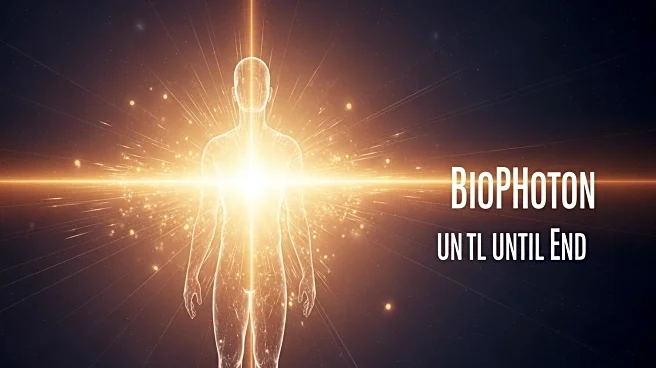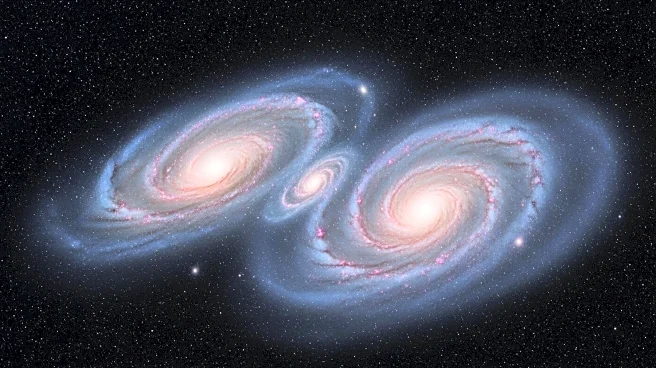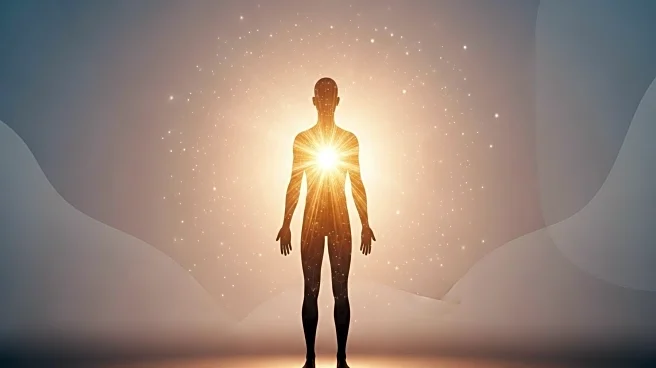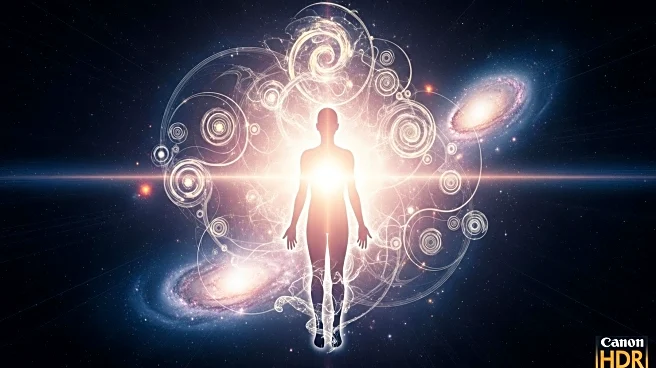What is the story about?
What's Happening?
Researchers from the University of Calgary and the National Research Council of Canada have discovered that human bodies emit faint biophotons, a form of light, which cease upon death. This phenomenon, known as ultra-weak photon emission (UPE), is linked to oxidative metabolic processes in mitochondria, the energy-producing organelles in cells. The study, published in The Journal of Physical Chemistry Letters, highlights that this light emission is a natural biochemical process rather than a mystical one. Experiments conducted on mice showed a significant reduction in photon emission post-mortem, particularly in areas like the paws and head. The study also observed that injured plant leaves emit more light due to stress signals, suggesting that UPE could serve as a tool for assessing the health and stress responses of plants.
Why It's Important?
The discovery of biophoton emissions in living organisms presents significant implications for health monitoring and ecological applications. By providing a non-invasive, label-free imaging method, UPE could become a valuable tool in assessing the vitality of living organisms. In humans, further research could lead to using biophoton emissions to track disease progression or response to treatments, potentially revolutionizing health monitoring. This approach offers real-time insights into biological processes and stress responses, which could enhance medical diagnostics and ecological monitoring. The study demystifies the phenomenon, placing it firmly within the realm of biological processes, and encourages further research into its functional significance.
What's Next?
As researchers continue to explore the underlying mechanisms of UPE, its potential applications in biological and medical sciences become increasingly apparent. The study suggests that UPE could be used to monitor the health of both fauna and flora, offering insights into agricultural and ecological applications. In the medical field, the potential to track disease progression or response to treatments could lead to advancements in diagnostics and patient care. The ongoing research aims to further understand the role of biophoton emissions in living organisms, potentially transforming approaches to health monitoring and ecological conservation.
Beyond the Headlines
The study of biophoton emissions challenges mystical interpretations of light emitted by living organisms, often associated with concepts like auras or spirits. By emphasizing the biochemical nature of UPE, the research dispels myths and encourages a scientific understanding of the phenomenon. This shift in perspective could lead to broader acceptance and integration of UPE in scientific and medical communities, fostering innovation in health monitoring technologies. As the research progresses, it may also contribute to a deeper understanding of the fundamental processes governing life and death.
AI Generated Content
Do you find this article useful?













